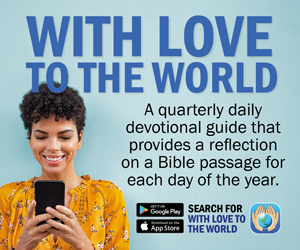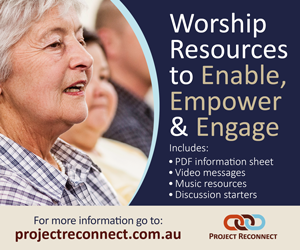This new year brings a fresh opportunity for the transforming Spirit of God to be at work across NSW, the ACT, and our world. In early February I was in beautiful Gerringong, the land of the Dharawal people.
I was there on retreat with our young people who offer leadership to their communities and to their Churches. It was an exciting opportunity to worship with them, and to pray, lead, and listen. To ask – what does Easter mean for them in 2024? To question if the story of Jesus is still relevant to them, in a time where accessibility to information, data, and choices are at a click of a button. I couldn’t wait to hear what they’re hearing as they engage with children and young people in their Church and community.
Easter for me begins by Mary going to the tomb early in the morning and discovering it empty. However, first I want go back a step to when Jesus arrived in Jerusalem on Palm Sunday. Those around him discovered what he had to offer as a radical leader, a leader that was different, one that was about calling out the injustices in their community, one that was about walking with the marginalised and the poor, about healing the sick and feeding the people, the 5000 that we hear about in the story of the Bible. The people were so moved that they followed, and as he entered Jerusalem on Palm Sunday, they laid their cloaks on the ground and palms, and they welcomed Jesus with Hosanna. How quickly things would change.
They move from joy to calling out to crucify Jesus, and we hear the story of a betrayal, of violence, of pain. The cross offers and tells the story of the sacrificial love of God for the people of Jesus’ time and even for us today in 2024.
How might that still be relevant for young people today?
It’s important to listen to this story of love and hope, because it gives meaning and life to what it means for Mary to discover that the tomb was empty. What Mary discovers is an engagement with the risen Lord. The Lord calls her by name as she sits weeping and saying, “Where is my Lord? And where they have taken him?”.
Jesus says, “Mary, I know you by name”.
What does it mean that we are called by name?
One of the powerful things that happened is that transformation occurred in the empty tomb with Mary. She discovers the linen cloth that Jesus’ body was wrapped in, one placed at the head and one at the feet of Jesus.
At Christmas we talked about the birth of Christ in that lowly place in a manger, and his body was wrapped in a band of cloth, the light of the world. And here 33 years later we are in an empty tomb, cloth laid aside. And Jesus encounters Mary and Mary encounters the risen Lord. She also goes out saying that “I have seen the Lord”.
Seeing the Lord isn’t just a face-to-face engagement. It’s about a transformation, about the whole of us. In seeing the Lord our language changes, our actions change. We cannot be complacent, but need to put our words, our thoughts into action.
What does it mean to still sit in the empty tomb, and what does that mean to encounter the risen Lord and be known and called by name as a child of God?
Friends, during this Easter season may we continue to go out and tell a story of the risen Lord and tell the story of hope that Jesus offers us in our communities, our families, and among our colleagues and friends, and indeed our world.
I began by asking the question, is the story of Easter still relevant for us? I’m here to say that the story of Jesus is very much alive and well.
We see the risen Christ in our communities, families, and world. Seeing is engaging with the challenges, the pain, the violence, the hurt, injustices that are in our world. Engaging and doing something about it.
May you have a blessed Easter and may you walk gently, not just at Easter, but every day as we continue to walk with God this year.
The Moderator, Rev. Faimata Havea Hiliau













